Most brands focus on the sale. But the real test of loyalty starts the moment your customer checks out.
The post-purchase experience includes everything that happens between “Order confirmed” and “Parcel delivered.” It’s the stage where your promises are tested and your customers find out how reliable your brand is.
According to Australia Post, Australians spent a record $69 billion online in 2024, showing how critical it is for retailers to deliver a smooth and reliable experience from checkout to delivery.
For shoppers, a transparent process from checkout to delivery makes all the difference. The latest report also revealed that 90% of shoppers see delivery speed as part of their overall shopping experience, with expectations starting the moment an order is placed.
They want to know what’s happening with their order, when to expect it, and who to contact if something goes wrong. Recent findings also show that nearly 8 in 10 shoppers say their satisfaction is directly influenced by the delivery experience, reinforcing how post-purchase service shapes loyalty.
This guide explains how a strong post-purchase experience builds loyalty, and how the right tools can make each delivery seamless and stress-free for your customers.
What Is the Post-Purchase Experience?
The post-purchase experience covers every touchpoint your customer has after buying from you. It includes the order confirmation, the tracking updates, the delivery itself, and even the message you send once the parcel has arrived.
A great post-purchase journey keeps customers in the loop before they ever need to ask questions like:
- Has my order been sent?
- When will it arrive?
- Where is it now?
When updates are clear and easy to access, customers feel confident and looked after. That sense of trust turns waiting into anticipation and first-time buyers into loyal repeat customers.
Why the Post-Purchase Experience Matters for Customer Loyalty
Loyalty is built through consistency and care. When customers see that your brand communicates openly, delivers on time, and handles issues quickly, they start to trust you.
That trust is what turns one-time buyers into loyal fans. They remember how effortless the process felt. From clear updates to dependable delivery and transparent communication throughout.
Over time, those experiences build your reputation. And when people trust you, they come back, often bringing new customers with them and proudly recommending your brand.
The ultimate goal of loyalty is advocacy. Brand advocates go beyond repeat purchases. They share your brand, recommend it to others, and speak from genuine experience.
The Key Components of a Great Post-Purchase Experience
The most successful retailers break the post-purchase experience into these key parts. Together, they create a journey that makes customers feel supported, informed, and valued.
1. Clear and Consistent Communication
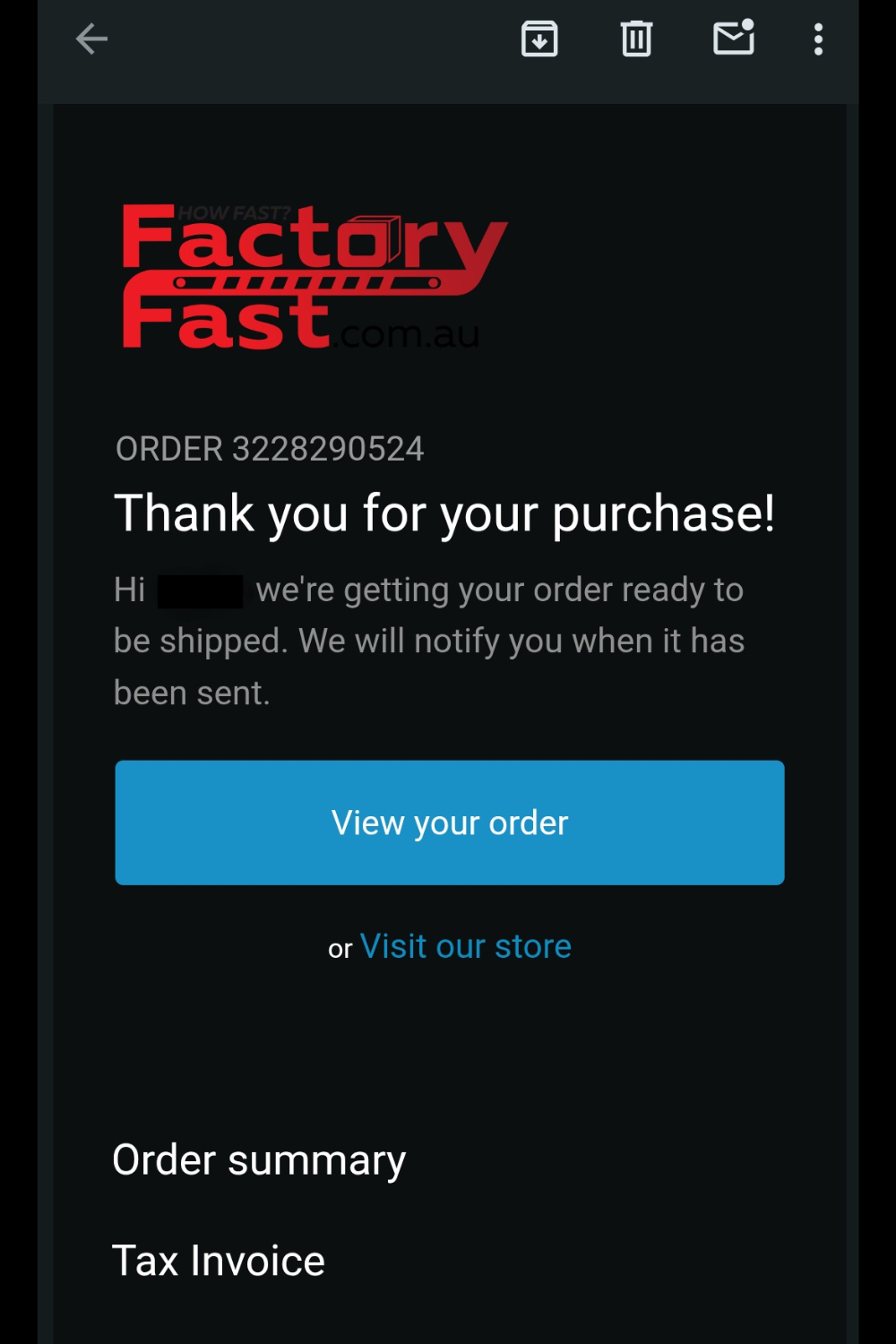
Good communication sets the tone for the entire post-purchase experience. It’s about how you speak to customers, not just how often.
Start by confirming their order quickly with a friendly, branded message that outlines what they purchased and when to expect delivery. Then, use your communication style to guide them through what comes next. Keep messages short, easy to read, and consistent with your brand’s tone. For example, use plain, friendly language like “Your parcel’s been picked up,” “It’s out for delivery,” or “It’s been delivered safely.”
Make information easy to find. If something changes, like a delay or stock issue, be upfront and explain it clearly. Customers appreciate honesty and clarity more than formality or silence. Consistent communication across emails and texts builds familiarity, reinforces your brand voice, and helps customers feel confident that they’re in good hands.
2. Delivery Visibility and Tracking
Customers feel most at ease when they can see exactly what’s happening with their order. Real-time tracking removes uncertainty and helps reduce “Where’s my order?” messages by giving customers all the information they need upfront.
Include a tracking link in every update that takes customers to a branded tracking page. This page should show key delivery stages: booked, in transit, out for delivery, and delivered. All in clear, easy-to-follow language. Keeping it branded with your colours and logo reinforces your identity throughout the journey, reminding customers that you’re in control from start to finish.
3. Reliable Fulfilment and Timing
Delivering on your promises starts with an organised, well-run fulfilment process. Set clear expectations at checkout by giving customers an estimated delivery window rather than a fixed date. It’s a simple way to be transparent while protecting your brand from disappointment if couriers or postal services experience delays.
Behind the scenes, use automation to keep orders moving efficiently. From courier selection to label printing and dispatch. The faster and more accurately parcels leave your warehouse, the smoother the experience feels for your customers.
And when delays do happen, be upfront about it. A quick, honest update shows that you value your customers’ time and that their order is still a priority. This kind of reliability and communication builds confidence and keeps people coming back.
4. Branded Experience Beyond Checkout
Every part of your delivery should feel like an extension of your brand. From your confirmation emails to your packaging, small details make a big impact.
Use your brand colours, logo, and tone consistently across all post-purchase touchpoints such as tracking pages, inserts, and packaging. A thoughtful unboxing experience or a short thank-you note can leave a lasting impression. When everything feels connected and intentional, customers remember not just the product, but how it made them feel to receive it. Use your brand colours, logo, and tone consistently across all post-purchase touchpoints such as tracking pages, inserts, and packaging. A thoughtful unboxing experience or a short thank-you note can leave a lasting impression. When everything feels connected and intentional, customers remember not just the product, but how it made them feel to receive it.
5. Customer Support That Feels Human
Customer support is one of the most powerful ways to strengthen loyalty after a purchase. Make it easy for customers to reach you when they have questions, and respond quickly with empathy and clear guidance.
A helpful, human reply that focuses on solving the issue and reassuring the customer leaves a lasting impression. It shows that you see people behind every order and genuinely care about their experience. When support feels personal and proactive, it builds trust, strengthens relationships, and keeps customers coming back.
6. Reviews and Feedback Collection
Customer feedback is one of the best ways to keep improving your post-purchase experience. Ask for reviews after delivery through short surveys or automated emails to learn how customers felt about their order, delivery, and overall experience.
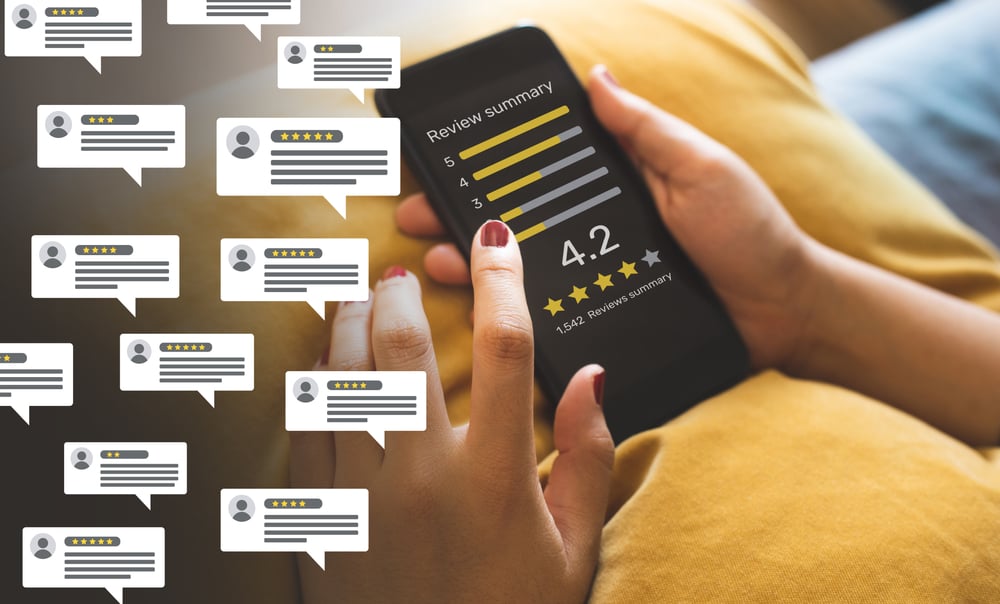
This information gives you valuable insight into what’s working and what might need refining. Whether it’s packaging, courier performance, or communication. It also shows customers that their opinions matter and that you genuinely care about making their experience better each time they shop.
Encourage participation by offering small incentives like discount codes or loyalty points for their next order. Acting on customer feedback helps improve service quality and builds transparency and trust, turning feedback into a powerful driver of loyalty.
7. Packaging That Delights
Your packaging is the first physical touchpoint your customers have with your brand, and often, it’s the part they remember most. A well-presented parcel turns delivery into an experience rather than a transaction.
Branded boxes, tissue paper, or eco-friendly materials show pride in your presentation and help your brand stand out the moment the parcel arrives. Add thoughtful touches like a thank-you note, a small freebie, or a surprise discount for their next order to create that extra “wow” moment. These gestures make customers feel appreciated and can encourage them to share their unboxing online, giving your brand organic exposure.
Consistency is key. Keep packaging aligned with your visual identity and values, and make sure it’s both attractive and functional. A well-protected, neatly packed order shows care and attention to detail, while damaged goods or excessive waste can quickly undo that positive impression.

Pro tip: Always use packaging that fits your products properly. Nothing should exceed the parcel’s dimensions. If your box has a ribbon, bow, or any decorative element on the outside, make sure to place it inside a protective shipping box. It keeps costs down, protects your items, and ensures a polished delivery every time.
8. Easy Returns and Refunds
Returns are a natural part of online shopping, and how you handle them can make a real difference. A clear and simple returns process builds confidence and shows customers that you care about their experience even after delivery.
Outline your policy clearly on your product pages, footer and checkout page, including it in your order confirmation or tracking emails, so customers always know what to do if they need to send something back. Make the process convenient with options like local drop-off points, pre-printed labels, or courier pick-ups. Anything that saves customers time and effort.
Keep communication open throughout the process by sending quick updates on where their return stands and when they can expect a refund. A smooth, transparent return journey turns what could have been a frustrating task into a positive, trust-building experience that encourages customers to shop with you again.
How Interparcel’s Tools Enhance the Post-Purchase Experience
Interparcel was built to make the post-purchase experience effortless. Every tool helps retailers fulfil orders faster, communicate clearly, and deliver the reliability customers expect. Turning everyday deliveries into moments that build trust and loyalty.
1. Shipping Manager: All-in-One Fulfilment Dashboard
The Shipping Manager brings all your orders from your store into one simple dashboard. You can view, book, and dispatch shipments without switching platforms or manually entering data. By managing everything in one place, fulfilment becomes faster, smoother, and more accurate, helping parcels reach customers on time and without errors. A well-organised fulfilment process means fewer delays and a more dependable delivery experience for your customers.
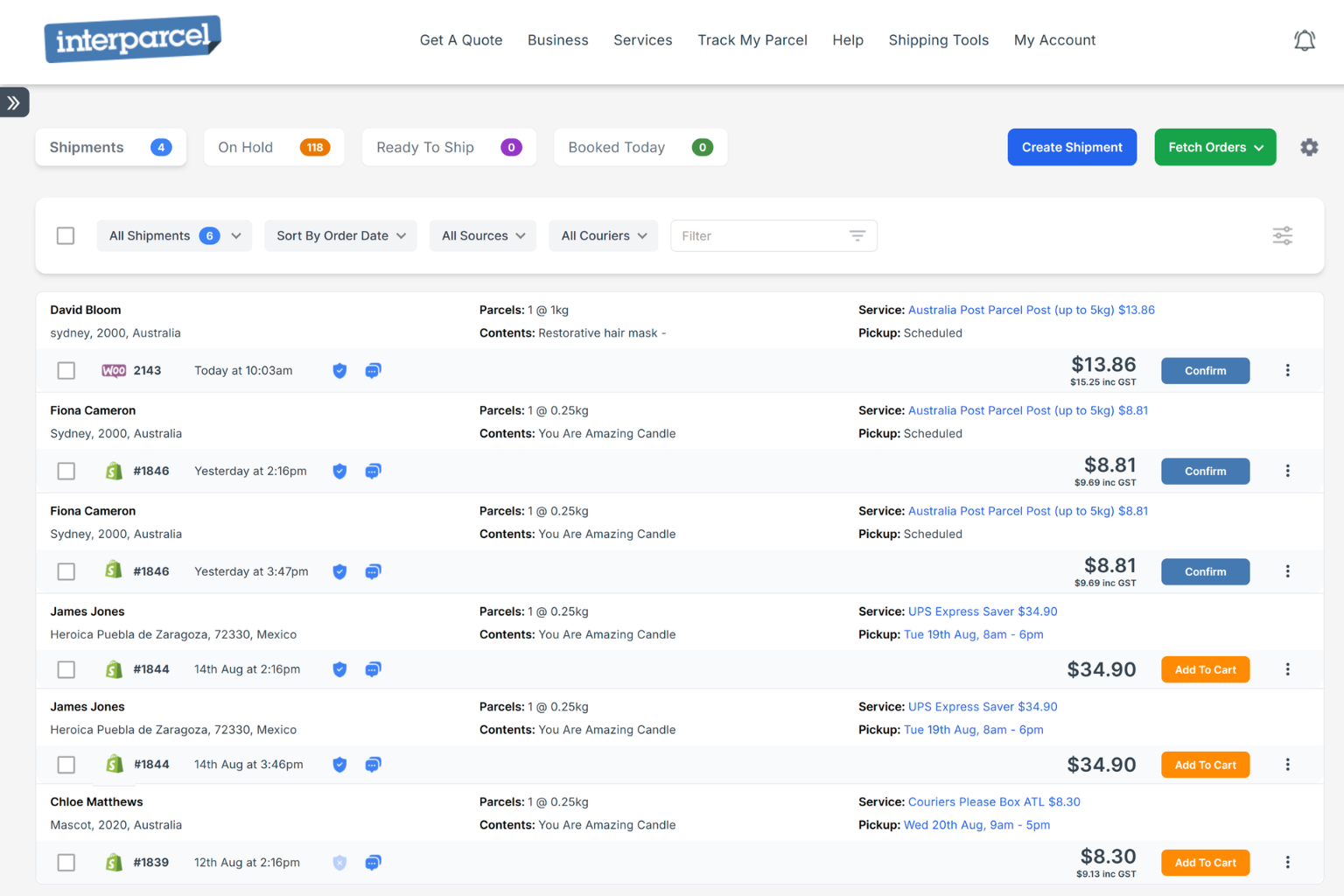
2. Rule Manager: Automate Smart Shipping Choices
Rule Manager allows you to set up custom rules that automatically choose the right courier, service, or package type for each order. For example, you can send all express orders with one courier and regional parcels with another. Once set up, these rules run in the background, removing manual decision-making. The result is consistent, making customers feel your service is fast, dependable, and well-managed.
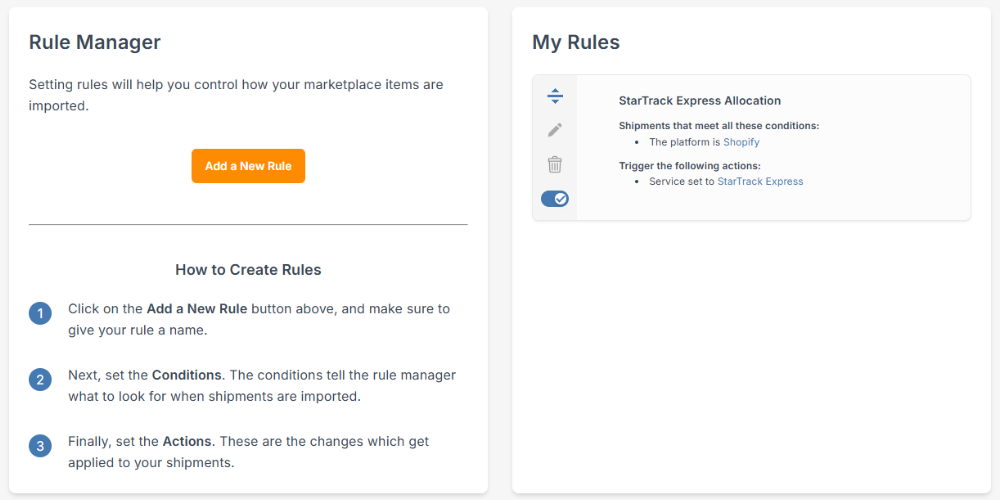
3. Smart Boxing: Packaging Made Efficient
Smart Boxing automatically calculates the best box size and configuration based on your stored product dimensions. It ensures each parcel is packed efficiently, reducing wasted space and the number of boxes used.This saves time during packing and guarantees that customers receive all their items together (not in separate boxes), well-protected, and in perfect condition, making the unboxing moment smooth and enjoyable.
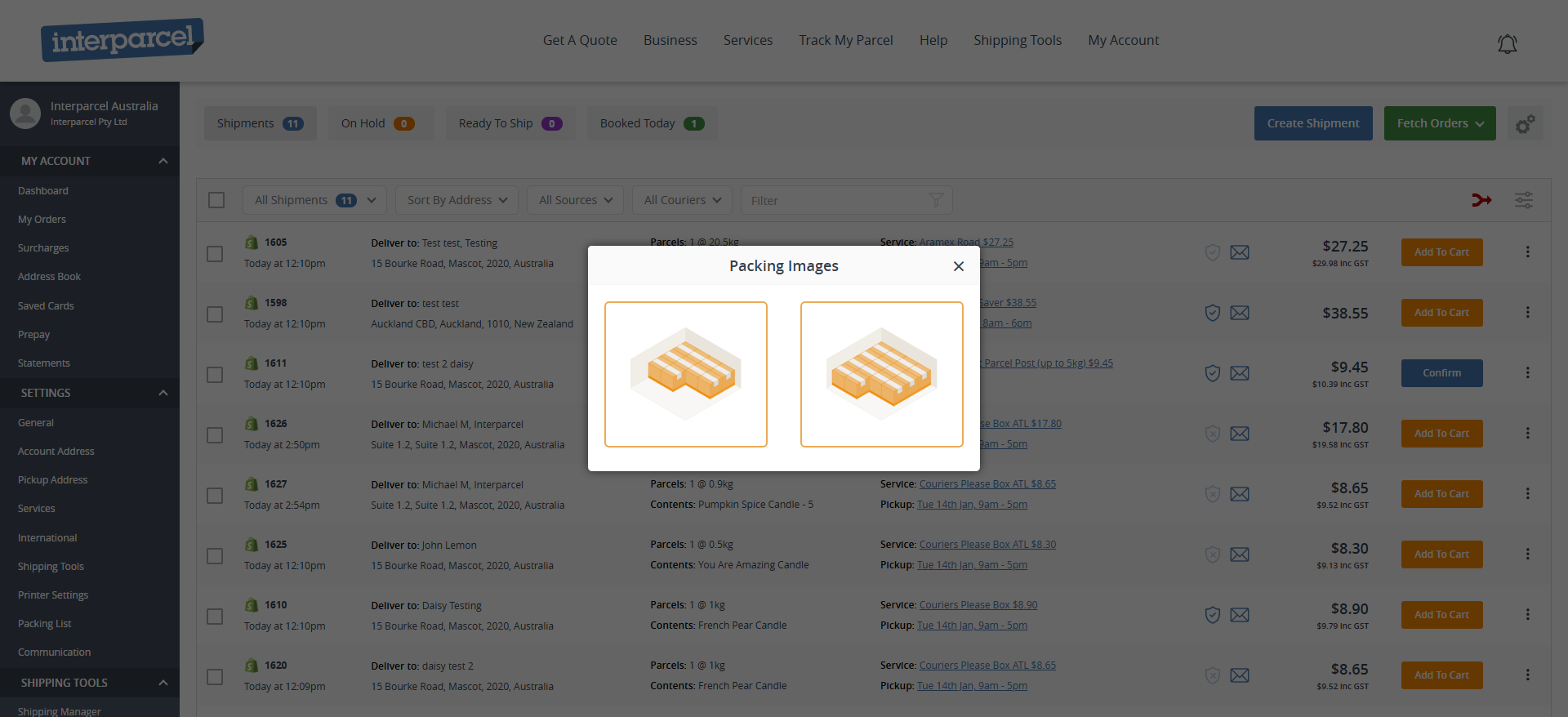
4. Branded Tracking and Notifications: Keep Customers in the Loop
Branded Tracking connects your customers to a live tracking page that looks and feels like your brand. As soon as an order is booked, customers can follow its journey in real time. From booked to out for delivery to delivered. You can also enable email and SMS notifications to keep them updated with simple, friendly messages like “Your parcel’s on the way” or “It’s been delivered safely.” This level of transparency reduces uncertainty, minimises “Where’s my order?” messages, and builds lasting trust.
5. Print Manager: Fast and Accurate Label Printing
Print Manager lets you print all your shipping labels directly from the dashboard, either one by one or in bulk. It automatically formats each label for the correct courier, saving time and reducing manual errors. This helps you dispatch parcels faster, especially during busy periods, ensuring your customers receive their orders as quickly as possible.

When these tools work together, retailers can simplify fulfilment and strengthen every step of the journey after checkout. The result? Faster deliveries, clearer communication, and a post-purchase experience that customers remember for all the right reasons.
How to Keep Improving Your Post-Purchase Journey
Once your systems are running smoothly, the next step is ongoing refinement. A great post-purchase experience grows with your business. Each order is an opportunity to make small improvements, build stronger relationships, and make every delivery feel smoother than the last.
- Use data wisely: Keep an eye on courier performance, delivery times, and customer feedback to find simple ways to refine your process.
- Automate tasks: Automating repetitive work helps orders move faster and gives you more time to focus on customers.
- Improve your packaging: Use the right box sizes and materials that reflect your brand and support your sustainability goals. Thoughtful packaging always leaves a lasting impression.
- Communicate like a person: Keep every message genuine and easy to understand. A friendly, natural tone helps customers feel supported.
- Close the loop: After delivery, send a thank-you message or ask for feedback. A small gesture like this shows appreciation and keeps the relationship going.
Continuous improvement is what turns a smooth delivery process into a loyalty-building advantage, one that keeps customers happy, confident, and ready to shop again.
Building Loyalty Beyond Delivery
Your customers are at the heart of your business, and how you support them after checkout says everything about your brand. Every touchpoint, from updates and delivery to packaging and returns, shapes how they remember their experience with you.
When those moments feel seamless and thoughtful, they build trust and long-term loyalty. With Interparcel, you can create a post-purchase experience that shows customers you care, delivering a journey that feels seamless, transparent, and memorable.
Ready to elevate your post-purchase experience? Talk to our shipping experts to discover how we can help you take your post-purchase experience to the next level.










 Facebook
Facebook Twitter
Twitter Instagram
Instagram Linked In
Linked In YouTube
YouTube